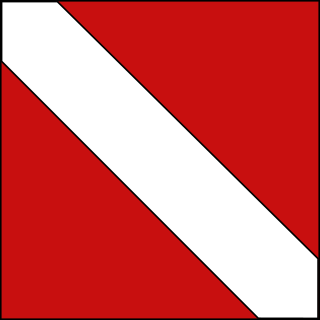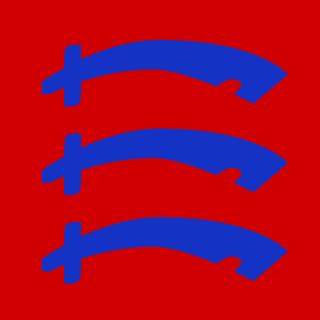61st Brigade was an infantry formation of the British Army during the First World War. It was formed in September 1914 as part of the new army also known as Kitchener's Army and was assigned to the 20th (Light) Division, serving in the trenches of the Western Front. It was reformed as a motorised infantry brigade in Italy during the Second World War.
The 19th Brigade is an Army Reserve formation of the British Army. As the 19th Infantry Brigade, it fought in the First and Second World War.

152nd Infantry Brigade was a formation of Britain's Territorial Force/Territorial Army that was part of 51st (Highland) Division in both World Wars. From its origins in the 19th Century Volunteer Force it was based in Inverness and was composed of Highland battalions. It served on the Western Front in World War I, and after it was captured at Saint-Valery-en-Caux early in World War II it was reformed from its 2nd Line and saw action in North Africa, Sicily and North West Europe.

153rd Infantry Brigade was a formation of Britain's Territorial Force/Territorial Army that was part of 51st (Highland) Division in both World Wars. From its origins in the 19th Century Volunteer Force it was based in Aberdeen and was composed of Highland battalions. It served on the Western Front in World War I, and after it was captured at Saint-Valery-en-Caux early in World War II it was reformed from its 2nd Line and saw action in North Africa, Sicily and North West Europe. It continued serving postwar until the reduction of the Territorial Army in the 1960s.

154th Infantry Brigade was a formation of Britain's Territorial Force/Territorial Army that was part of 51st (Highland) Division in both World Wars. From its origins in the 19th Century Volunteer Force it was based in Stirling and was composed of Highland battalions. It served on the Western Front in World War I, and after it escaped from France early in World War II it was reformed from its 2nd Line and saw action in North Africa, Sicily and North West Europe. It continued serving postwar until the reduction of the Territorial Army in the 1960s.

The 7th (Meerut) Division was an infantry division of the Indian Army and before 1895, the Bengal Army, that saw active service during World War I.
The Durham Light Infantry Brigade was formed in 1902 to command the part-time Volunteer battalions of the Durham Light Infantry (DLI). Previously these had been in a combined Tyne and Tees Brigade with battalions of the Northumberland Fusiliers. It consisted of the 1st–4th Volunteer Battalions of the DLI, which were renumbered as the 5th–8th Battalions when the Volunteers were subsumed into the Territorial Force (TF) under the Haldane Reforms of 1908. Consisting of 6th–9th Battalions, it became part of the TF's Northumbrian Division. During World War I it was numbered as the 151st Brigade on 14 May 1915, when the division became the 50th (Northumbrian) Division. The TF also raised 2nd Line units and formations, and the 190th Brigade was formed in 63rd Division. The 1st Line battalions adopted the prefix '1/'
The Liverpool Brigade, later 165th (Liverpool) Brigade was an infantry brigade of Britain's Volunteer Force that served during World War I with the 55th Division of the British Army. During World War II, again as part of the 55th Infantry Division, the brigade remained in the United Kingdom.

The 140th Brigade was an infantry brigade formation of the British Army's Territorial Army (TA) that had its origins in a South London Brigade of the former Volunteer Force. It served on the Western Front in the First World War and was recreated during the Second World War where it served only in the United Kingdom as a training formation.

The 141st Brigade was an infantry brigade of the Territorial Army, part of the British Army, that served in the First World War and remained in the United Kingdom throughout the Second World War.
The 142nd Brigade was an infantry brigade of the Territorial Army, part of the British Army, that served in the First and the Second World Wars, and remained in the United Kingdom throughout the latter.
41st Brigade was an infantry formation of British Army during World War I. It was formed in August 1914 as part of the New Army, also known as Kitchener's Army, and was assigned to the 14th (Light) Division, serving on the Western Front. It was sometimes known as the 'Greenjacket Brigade' because it was composed of battalions of the King's Royal Rifle Corps and the Rifle Brigade, whose full dress uniforms were Rifle green.
60th Brigade was an infantry formation of the British Army during World War I. It was formed in September 1914 as part of the new army also known as Kitchener's Army and was assigned to the 20th (Light) Division, serving on the Western Front.
The 89th Brigade was an infantry formation of the British Army during World War I. It was raised as part of 'Kitchener's Army' and was assigned to the 30th Division. After the original formation was converted into a reserve brigade, the number was transferred to the Earl of Derby's brigade of 'Liverpool Pals'. The brigade landed in France at the end of 1915 and then served on the Western Front for the rest of the war, seeing action at the Somme, Arras, and Ypres. Virtually destroyed during the German spring offensive of 1918, it was reconstituted in time to take part in the final battles of the war.

The 123rd Brigade was an infantry formation of the British Army during World War I. It was raised as part of the New Armies. After the original 123rd Bde was renumbered, a new brigade was formed and served with the 41st Division from 1916 to 1919 on the Western Front, in Italy, and with the British Army of Occupation in Germany.
The 121st Brigade was an infantry brigade formation of the British Army during World War I. Part of Lord Kitchener's 'New Armies', it served in the 40th Division on the Western Front. The brigade number was reactivated for deception purposes during World War II.
The 226th Infantry Brigade was a Home Service formation of the British Army that existed under various short-lived titles in both World War I and World War II.

The 223rd Brigade was a Home Defence formation of the British Army in the First and the Second World Wars. It existed under several variations of the 223 Brigade title, and was eventually converted into an airborne formation.

The 17th Battalion, The London Regiment , was a unit of Britain's Territorial Force formed in 1908 from Volunteer corps dating back to 1859. It saw considerable service on the Western Front, at Salonika and in Palestine during the First World War. It served as a motorised infantry regiment during the Second World War before conversion to an artillery unit in 1947 and subsequent amalgamation in 1967.

The 5th Battalion, King's Regiment (Liverpool) was a volunteer unit of the King's Regiment (Liverpool) of the British Army. It traced its heritage to the raising in 1859 of a number rifle volunteer corps in Liverpool, which were soon consolidated into the 1st Lancashire Rifle Volunteer Corps (RVC). It was affiliated to the King's Regiment (Liverpool), and became its 1st Volunteer Battalion of the regiment. In 1908 the battalion was transferred to the new Territorial Force as the 5th Battalion, King's Regiment (Liverpool). It saw active service on the Western Front during World War I, as did its second line second-line battalion, and even a garrison battalion. Before World War II it again formed a second line battalion. Both served in home defence, but the 5th King's landed in Normandy on D Day as part of a specialist beach group 1939. When the Territorial Army was reduced in 1967, the 5th King's became a company of the Lancastrian Volunteers.







